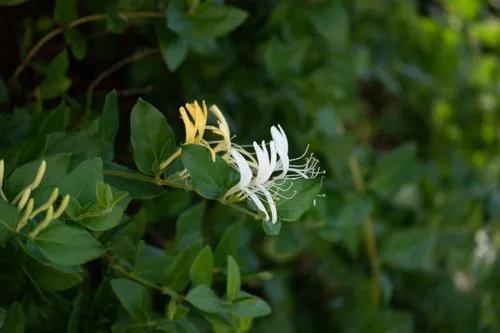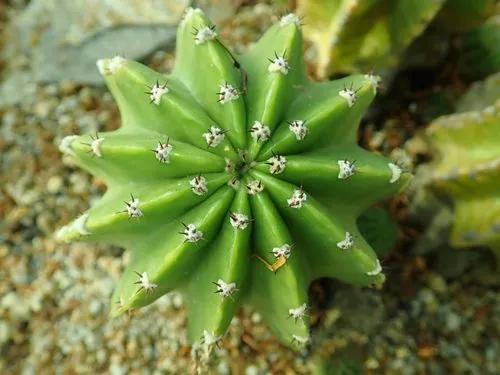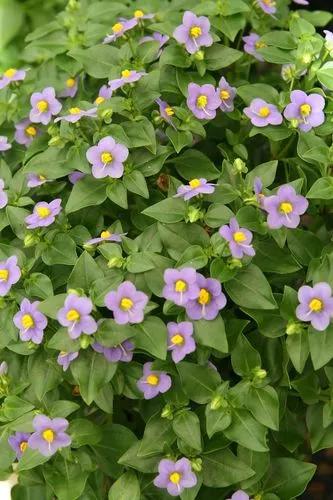This easy-care flowering succulent is a great indoor plant for beginners, as it can be pretty without seeking too much attention. The eye-catching fringed flowers will bring that alienish look amongst your other succulents, and it is also a great groundcover, as it spreads easily by itself. They also look great in hanging baskets and basically anywhere else you decide to put them to add a green spot to the place.
alsobia dianthiflora Care
Alsobia dianthiflora
Other names: Lace Flower, Lace-flower Vine, Chocolate Soldier, Episcia

Lace Flower is a perennial succulent originally from South and Central America. The small oval-shaped leaves have a fuzzy texture and grow rapidly on the plant during the growth season. It blooms with a white fuzzy flower with violet dots on the petals. It does not grow very tall, at about 6-8 inches (15-20cm). Lace Flower is also known as Chocolate Soldier, Flower Vine and Lace-Flower Vine.
How to Care for the Plant

Water

Lace Vine is drought tolerant to some extent, as the plumpy leaves of the flower retain some water, so it will be forgiving if you accidentally skip watering it. Some leaves will turn yellow, but that is most of the damage it will show. It prefers to stay in a moist environment without being waterlogged. Let the top of the soil dry before watering again.

Pruning

You might need to do some pruning from time to time to ensure good airflow between the stems and to keep plant's appearance in place. Cut any dead stems, yellow leaves or chaotic parts to keep it good-looking in its spot. Deadheading the flowers when they start to fade away after blooming also helps the plant stock up the energy for new growth in the following year.

Fertilizer

You can encourage the blooming of your Lace Flower by fertilizing using a slow-release fertilizer. You can also opt for adding organic compost to the soil, that should be enough for the plant to absorb its necessary nutrients to get its exotic flowers to bloom.

Sunlight

This plant is all about the sun, so give it your sunniest spot where it can get at least 6 hours of sun daily. If you cannot provide enough sun for it, you can opt for artificial growth lightning, to make sure the flowers of the plant will show up and stay in bloom for a long time.

Soil

Choose a potting mix that is well-draining and does not get too dense after watering, but make sure it retains moisture and does not dry too fast. Avoid sandy soil as this will keep the moisture out of the pot and the growth of the plant might be affected.

Propagation

You can propagate the plant in two ways, and both are really easy to follow. First, is by placing the new sprouts in moist soil close to the mother plant without cutting them. Soon, new roots will start to appear and to establish new baby plants. Once the roots are strong enough, you can cut the stems from the mother plant and continue to keep them in a moist environment until the plant can keep up with the same watering rhythm the mature plant has. Alternatively, you can propagate the Lace Flower by division, cutting part of the plant together with some roots and placing them in a new container with moist soil.

Temperature

Its origins make this plant a heat-resistant plant. Normal room temperature will be enough for it to thrive, but don’t keep it outside when the temperature drops down to 40-50°F (4-10°C), as it is not frost-tolerant. Keep it away from cold airflow during wintertime. It thrives in more humid environments, so you can keep it in a room where it gets constant mist, as long as you make sure it has enough sun exposure.

Container

You can grow this plant in any container that has drainage holes or in any hanging basket you like, as it is not very pretentious, and you will only need to repot it if you see the roots peeking out of the edges of the current pot. Do not repot very often, as the Lace Flower prefers to be root bound.

Fun fact

This plant is a great mother as it sprouts lots of baby stems during the growth period. It has stoloniferous growth habits, meaning that the stems will grow from the leaves’ axis, then root in the ground at a fast pace, giving you a rich, bushy plant by the end of the summer with its stems which are all carried by the same mother-plant.

Popularity

62 people already have this plant 17 people have added this plant to their wishlists

Common pests

If you thought things cannot get any better about caring for these plants, know that it also does not attract pests, so you will be a worry-free plant parent when it comes to Alsobia dianthiflora. Of course, if you keep it next to other infested plants, it will start to host some pests as well, so quarantine it immediately if you notice pests on other plants in your home.

Frequent diseases


Botanist’s tips

Discover more plants with the list below
Popular articles






